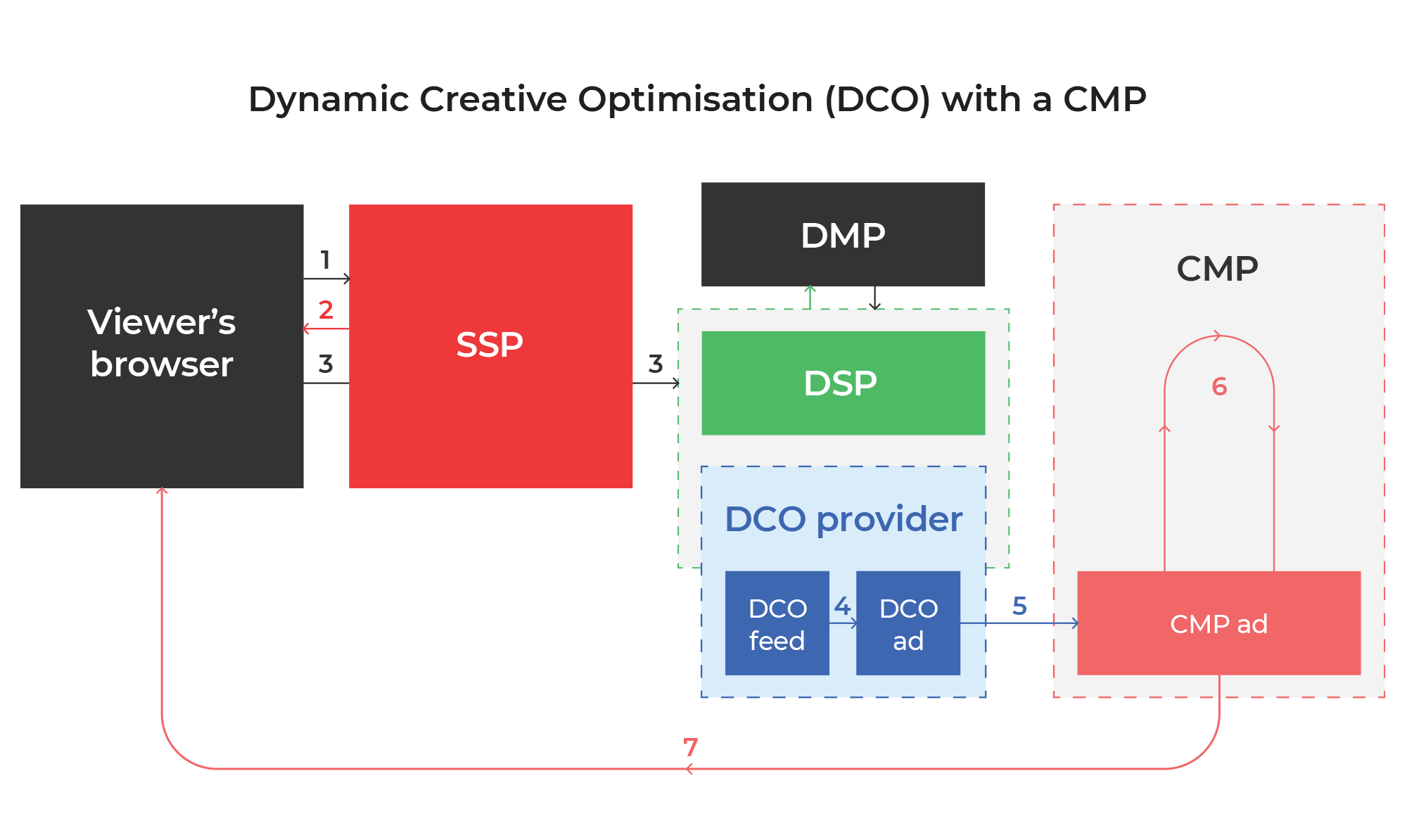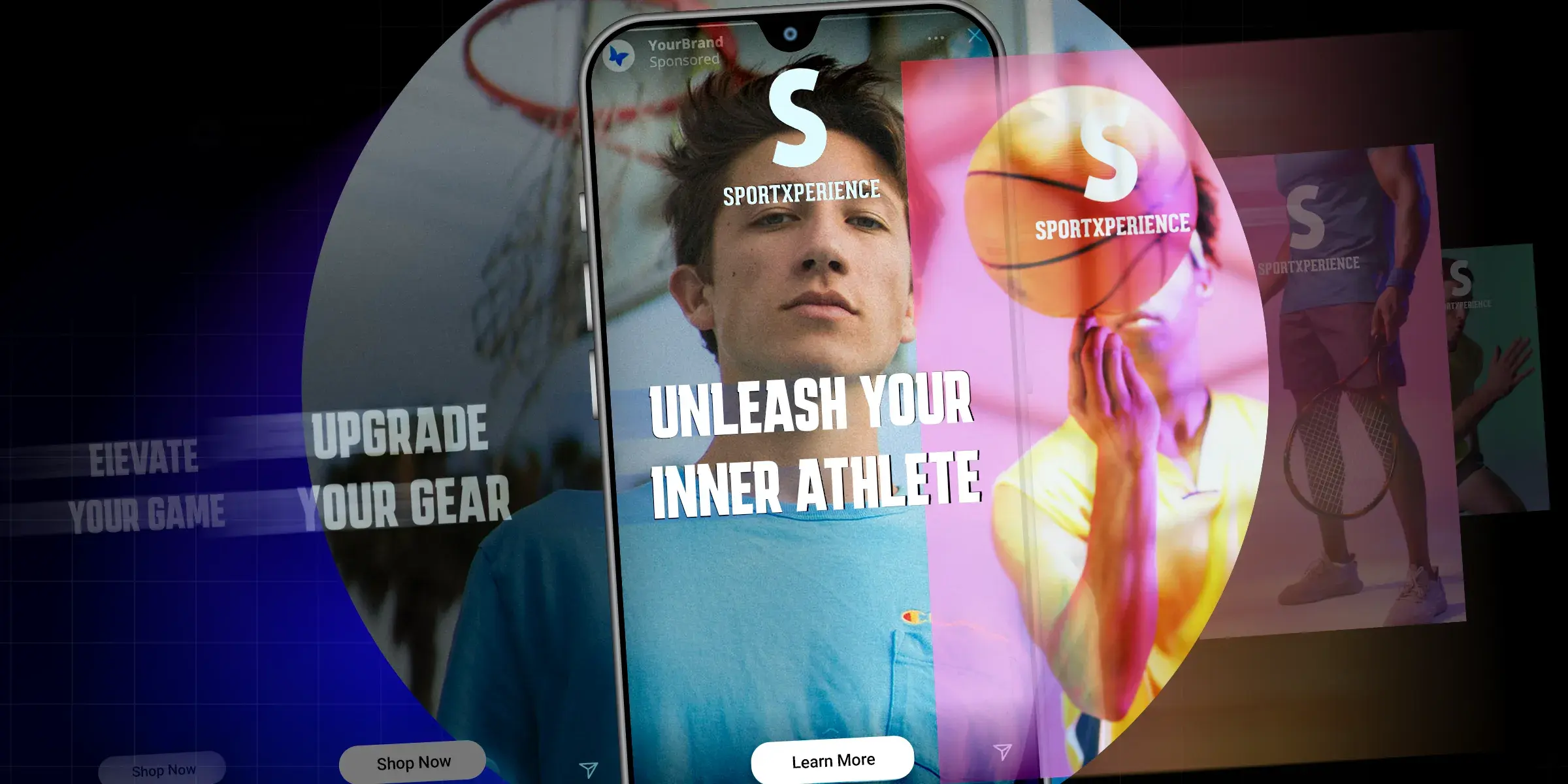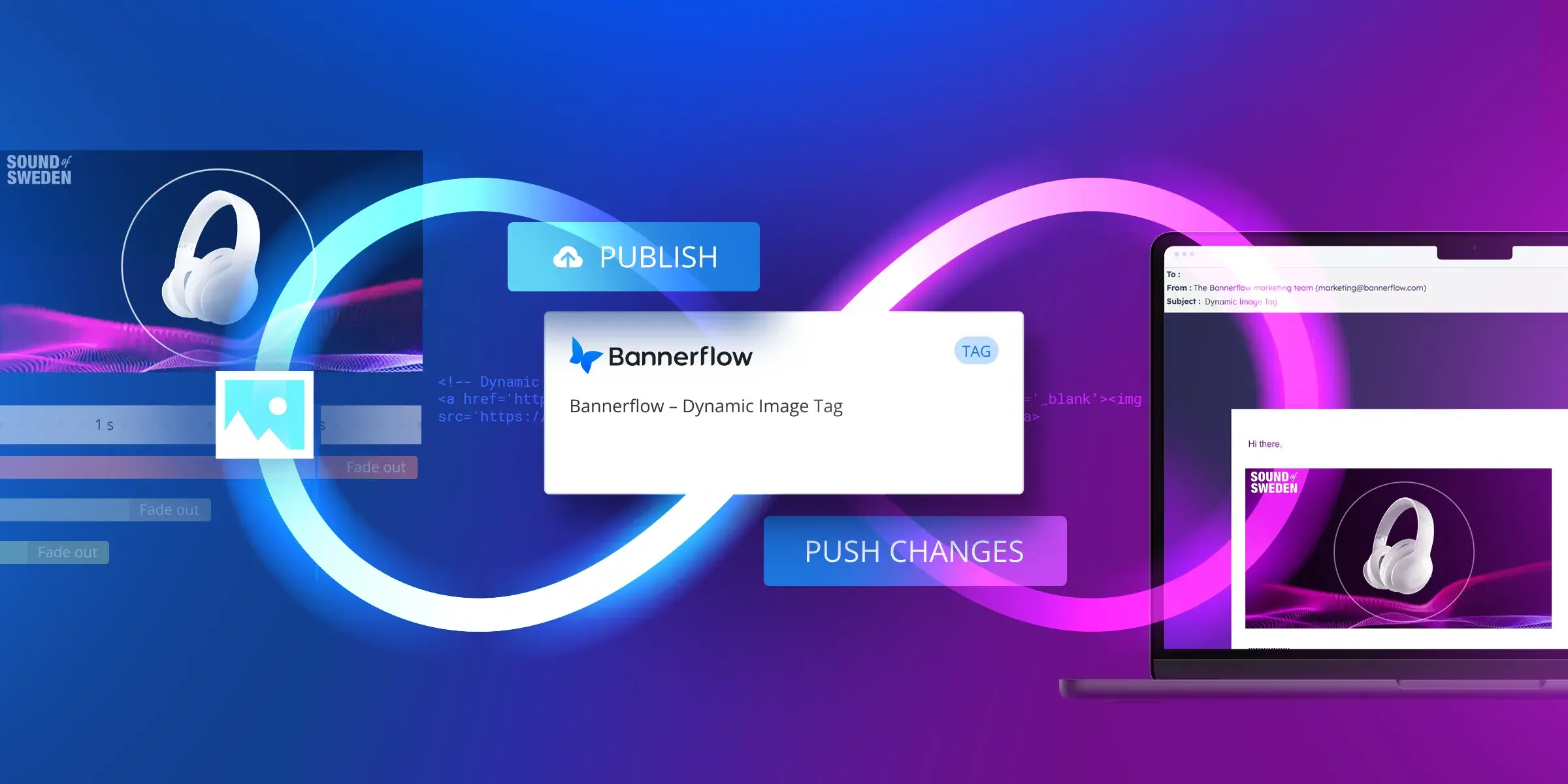Dynamic creative optimization (DCO) - it’s a concept many in marketing may be aware of, but how many of us have really grasped it? Implemented it? Mastered it? It’s next-level programmatic creative – it’s the beating heart of the display ads of your dreams, if you dream about that sort of thing, that is.
DCO marketing is all about assembling ads in real-time, tailored for each specific person based on user behavior. But how do you execute it?
Let’s explore what you need to know about DCO, why it’s the future of marketing, and dive into our step-by-step guide on how to do it the right way.
What is dynamic creative optimization (DCO) advertising?
DCO is personalized advertising that converts. It’s about using real data sources to enhance your banner ads, and inject them with live analytics, real-time testing and creative optimization.
The end result? Hyper-relevant dynamic display ads - personal to your customers. It’s creativity and data combined for maximum impact.
DCO uses live data to shape each ad. DCO platforms enhance banner ads with real-time analytics, testing, and creative optimization, producing tailored ads that appeal to individual viewers. The result? Hyper-relevant, data-driven ads that align with viewers’ unique preferences.
DCO banners, for instance, can adapt to show the most relevant offers or imagery based on the viewer’s past browsing data, bringing DCO capabilities to life through responsive ad design.
Your ad-tech stack in harmony
What’s more, DCO works with all of your tech stack in harmony. It combines inputs from your creative management platform (CMP), data management platform (DMP), and demand-side platforms (DSPs) using an algorithm. It picks the best combination of creatives to put in front of a viewer, based on first- and third-party data sources. DCO even optimizes this combination of elements as the campaign progresses automatically.
And just like any other campaign, rules can be programmed via a DSP. For example, if a click-through rate (CTR) in one ad version is lower than another, it’ll stop showing a particular combination of creatives.
Are banner ads dead? Find out and decide for yourself.
Types of DCO
Dynamic: pre-made dynamic ad variants, featuring data-fed elements. This type allows for more engaging, rich DCO media designs and creative optimization using a CMP.
Static units: a single DCO-powered ad that uses an algorithm to select the creative displayed in real time. This approach requires more manual setup (plus coding knowledge), but can still be effective for personalized DCO advertising.
Rather than relying on a CMP that is not optimized for DCO, why not rely on one that is? Creative management platforms which excel in DCO ad production, such as Bannerflow, offer the same awesome versioning and rich media capabilities of the best HTML5 display campaigns – code-free.
Why use a CMP for DCO?
A CMP is your production engine for DCO, enabling you to produce and control ad variations needed for a DCO campaign. CMP-driven DCO solutions simplify the process by managing multiple creative assets and allowing you to set up data feeds that bring dynamic creative optimization examples to your campaigns. Platforms like Bannerflow support DCO solutions with no-code, dynamic ad production.

Benefits of DCO in digital marketing
DCO taps into the growing trends of data-driven advertising and in-house marketing.
It enables targeted personalization by showing ads relevant to each user’s preferences, leading to increased engagement and better ROI. It also ensures that DCO ads are optimized based on audience behavior, driving improved performance in your media campaigns.
Audience perception of personalization is changing
Consumer participation and a better understanding of advertising indicate that viewers are eager for greater personalization. According to eMarketer research, “Epsilon found that four-fifths of consumers are more likely to make purchases when a brand gives them a personalized experience”. Additionally, according to that same research, 71% of all consumers are “frustrated that their shopping experiences were too impersonal”, demonstrating a strong yearning toward personalized ads from the average consumer.
What does this mean for marketers?
If ever there was a time (and a need) for relevant, high-quality DCO media - it’s now. Viewers are aware of personalized advertising but seem to be unhappy with the quality of the ads they receive. And in an era of ad blockers, getting this balance right is important.
Keep customers in mind
Strive to remain relevant to your audience through personalization. Retargeting, for example, doesn’t have to be abrasive and static. DCO – particularly the type produced and controlled via a CMP – offers greater personalization with nuance and creativity. Data informing the creative process – rather than dominating it – is the ideal outcome.
Stay creative and engaging with your use of DCO
Template-free, dynamic creatives produced and controlled by a CMP offer the minimum requirement for sophisticated display advertising campaigns. CMPs enable you to be more creative in your DCO approach.
A tip? Try using different banner designs for different target audiences, which aren’t variations of a standard template. CMPs like Bannerflow enable you to use entirely different types of layout, design, or interactive elements for specific audience segments. There’s no limit to your creative ambition.
Step-by-step guide: how to set up a successful DCO campaign
Wondering where to start? Follow these steps to effectively set up your DCO campaign.
First, though, you’ll want to start with a solid data foundation. Audience data is essential for targeted messaging and optimization. Without it, a DCO campaign risks being too broad and ineffective.
Step 1: Define your audience
Create detailed buyer personas for each target segment, considering factors like demographics, job roles, media habits, and shopping preferences. This helps to define where and how to reach each audience effectively.

(Wondering how to create these? Read more about buyer personas with Hubspot’s guide.)
Step 2: Understand their interests and online habits
Identify the platforms and sites your audience visits throughout their purchase journey, including relevant comparison sites and your website. This gives insight into where they’re likely to see your ads.
Step 3: Optimize device and location targeting
Analyze historical data to determine the devices your audience uses most and adjust targeting accordingly. For example, brand awareness may perform best on mobile, while conversions may be higher on desktop. Additionally, use geo-targeting to refine relevance even further.
Step 4: Leverage customer data
Draw insights from your CDP to understand which targeting strategies and CTAs resonate best with your audience. The more data you have, the better you can refine your targeting approach.
Step 5: Map messaging across the buyer journey
Remember, consumers often interact with multiple touchpoints (2.8 on average) before converting. Tailor your messaging to align with each stage of the buyer journey, highlighting your unique selling points (USPs) and differentiators.
Applying DCO to your display campaign
Halfway there! With your data and targeting strategies in place, you’re ready to set up your DCO campaign. Out of the two main approaches, creative-driven DCO with a CMP or template-driven DCO requiring coding expertise, we’ll focus on the creative approach:
Step 6: Integrate with your DCO platform
Connect your DCO platform to your DMP and CRM to ensure audience data feeds into your campaign, enabling precise personalization.
“…we use the information from our customer relationship management (CRM) and data management platform (DMP). This means we can build creatives that are more focused on the users’ needs. By doing this, we can reach our goal of even greater ad personalisation and increase ROI.”
Sergio Fernández Vidal, Digital Design and Production Specialist.
Step 7: Build decision trees for ad delivery
Set up a decision tree within your DCO platform to determine which ad variants display for specific audience segments. This helps to guide users through a personalized journey.
Step 8: Pair creatives with user journeys
Use a CMP to create customized ad versions for each stage in your decision tree, enhancing your DCO capabilities.Step 9: Automate and scale with a CMP
A CMP enables you to produce and scale multiple DCO creative variations, incorporating data feeds and design guidelines for optimized delivery.
Step 10: Launch and continuously optimize
Once your campaign is live, monitor performance and optimize elements such as messaging and creative assets. A/B testing throughout the campaign can enhance effectiveness and drive better results.
The future of DCO and advertising
Dynamic creative optimization is finding its way into all sorts of fascinating applications. Already, streaming services such as Netflix and Spotify are using the same technology to enhance and personalize internal advertisements. Next, we may even expect to see DCO-enhanced voice search ads start to become mainstream.
Using CMPs such as Bannerflow makes it far simpler for in-house teams to embrace DCO.
Looking to set up DCO for your team’s strategy? Get in touch with us for an initial consultation today!









